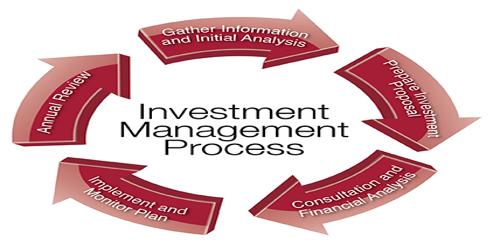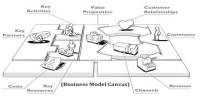Investment Risk Management Process
Investment risk can be defined as the probability or likelihood of occurrence of losses relative to the expected return on any particular investment. Investment includes the various methods and steps adopted by the prudent investors during the development of their funds in order to earn profit and to minimize risks involved therein. The purpose of risk management is to ensure that your investment losses never exceed acceptable boundaries by following disciplined practices including position sizing, diversification, valuation, loss prevention, due diligence, and exit strategies.
The main steps in the investment process are given below:
- To set goals and objectives: The first step in the investment process is to identify the goals and objectives f the investors. A systematic investment decision requires the formulation of a set of long-term or short-term goals which can serve as a guide for managerial decisions. This step also includes the determination of the quantum of investment in different shares and debentures quoted in the capital market.
- To determine appropriate risk level: The second step in the investment process is to determine the amount of risk that an investor is willing to assume to achieve the investment objective. This step will largely determine the mix of assets to be held in the investment portfolio and attempt will be made to quantify the risk and measurement of the same by applying appropriate tools.
- To estimate the risk and return: The third step in the investment process is to estimate the risk and return for the investors to take their decisions, because risk and return go hand in hand. Investors must balance risk with return.
- To form optimal portfolio: The fourth step in the investment process is to construct optimal portfolio which includes estimate of risk and return for individual securities and to maintain relationship between securities, portfolios and the like. An investment portfolio is the list of investment securities both common stock and bonds that an investor owns.
- To make the analysis of the performance: The fifth and the last step in the investment process is to analyze the performance of the vendor company’s financial statement in order to take investment decision. The investor should monitor the results of their portfolios for determining the goals and objectives and review the performance of the portfolios. This may provide some insights which will improve their security analysis and portfolio selection techniques.
Investment risks are the most common of the compensated risks. This is when the investment return is expected to be positive in the later stages of its maturity but the productivity of returns in the short and medium term are less certain. When this happens, the portfolio may fail to reach the total return target at any point. It may also fail to have the sufficient liquid income or assets available to be transferred to beneficiaries or the operating budget if needed.
For this reason, your investment return target and funding targets should be rigorously defined and explicitly related to your ability to accept liquidity and temporary mark-to-market losses. Your policy portfolio should specify these compensated investment risks and expected returns, both as targets and within reasonable ranges.
Information Source;
















